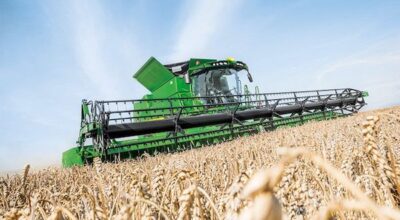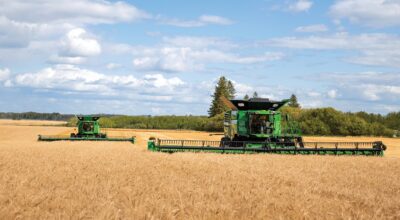When you’re handling your grain, you want to be sure you have the right equipment to maximize your yield. John Deere has a wide array of combines, as well as combine belts, to help you take on the task.
There are several combine headers to choose from that offer all-crop flexibility and specialist capabilities for whatever the terrain throws your way. However, maintenance is key to ensuring that your combines and combine belts last for years to come. Using belts that are in working order can also ensure that your machine is up to the task when it comes time to harvest.

Let’s take a look at how you can maintain your combine to maximize its lifespan out in the field.
- Check for tension and wear in your combine belts before the season starts. Doing so can save you in terms of downtime later on in the season.
- Look for excessive wear while you are checking your combine belts for tension. Cracking or exposed cords may be a sign that your belts are wearing down and may need to be replaced.
- Check your chains for elongation. If the elongation exceeds three percent, a chain should be replaced before the machinery is used.
- Keep chains lubricated. The best time to lubricate your chains is at the end of the day when they are still warm; this ensures that the lubricant has the best opportunity to penetrate the pins and rollers.
- Relieve tension on your belts with a tensioner once you are finished using the combine for the season.
- Schedule an offseason inspection with your local Deere dealer. He or she can give you insight into how to maintain your machinery over time.
John Deere combine belts are constructed in a unique way, specifically designed to stand up to wear and tear over time. The top section of the belt is the tension section that stretches as the belt forms around the pulley. The center section is where the belt gets its strength; the perfectly aligned fibers give it longevity. Finally, the bottom section compresses around the pulley.
After-market belts may look similar to belts from Deere, but the difference is most noticeable on the inside. For information on combine belts from Deere or certified alternatives for your machine, contact your local John Deere dealer or watch the video below.
If you enjoyed this post or want to read others, feel free to connect with us on Facebook, Pinterest, or Twitter!


